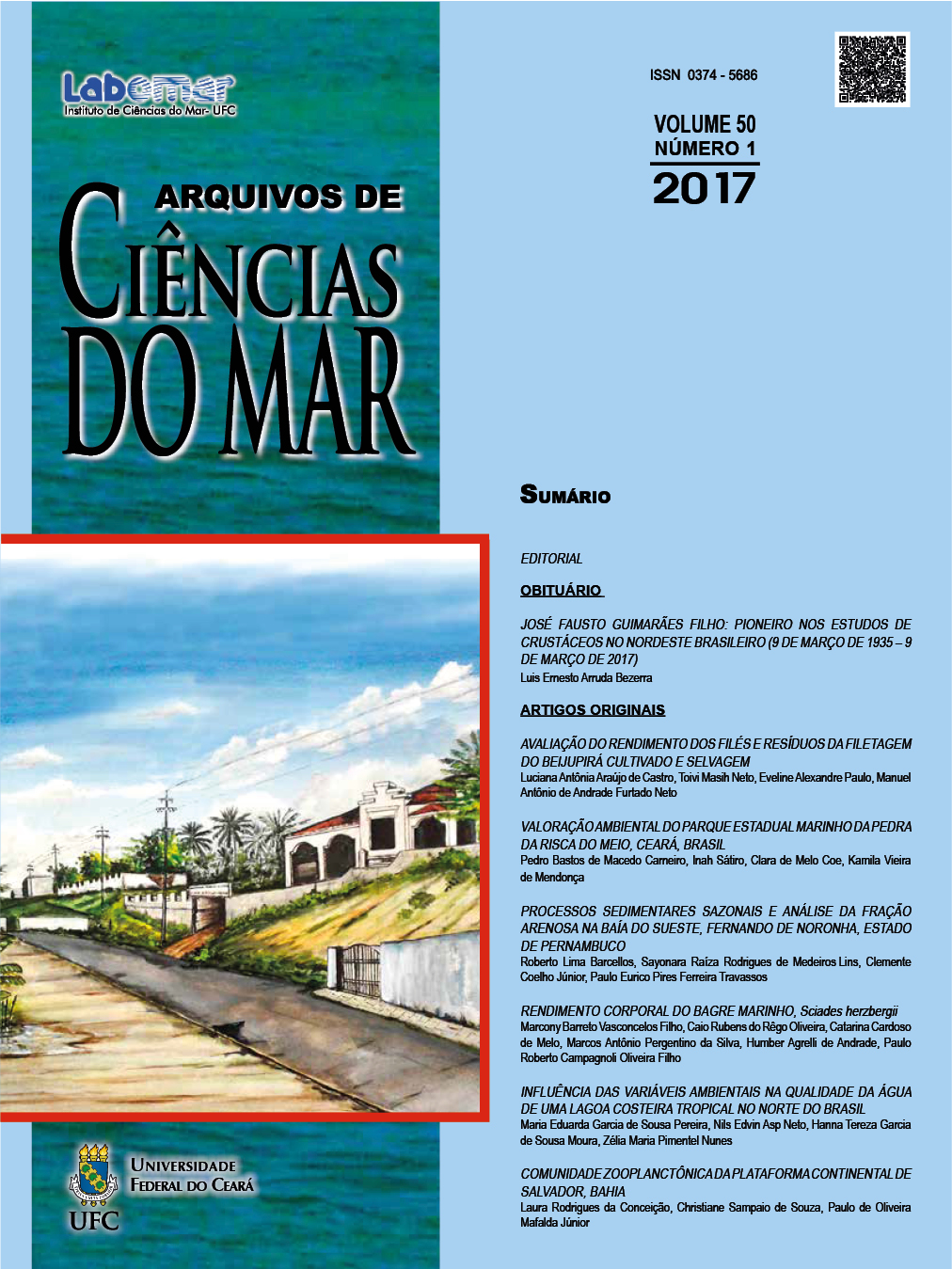DIET COMPOSITION OF PELAGIC FISH IN THE SOUTHWESTERN ATLANTIC, BRAZIL: AN ISOTOPIC MIXTURES APPROACH
DOI:
https://doi.org/10.32360/acmar.v50i1.18837Keywords:
top predators, stable isotopes, mixture models.Abstract
The purpose of this study is to characterize, through isotopic mixture models (13C and 15N), the diet of pelagic top predators of the Southwestern Atlantic Ocean. Thus, samples of muscular tissue were collected from individuals of the species: Xiphias gladius, Thunnus obesus, Thunnus alalunga, Thunnus albacares, Prionace glauca, Alopias superciliosus and Isurus oxyrinchus. Results indicate the diet of X. gladius is primarily composed by cephalopods (Ommastrephidae squids). A similar pattern is presented by T. alalunga, whose food is also mainly composed by Ommastrephidae squids. T. obesus and T. albacares present similar compositions, but smaller pelagic fish species are important to their diet compositions. A. superciliosus feeds mainly on Scombridae species (T. albacares and T. alalunga). A. superciliosus diet is composed mainly by Scombridae species, differing from that one from P. glauca, whose diet consists of smaller pelagic fish. The use of information in a conjugated way of the predators’ stomach contents as well as the isotopic tissue analyses may be a important step towards a more complete understanding of pelagic food web composition in Southwestern Atlantic Ocean.Downloads
Published
2017-12-14
Issue
Section
Artigos originais
License
1. Proposta de Política para Periódicos de Acesso Livre
Autores que publicam nesta revista concordam com os seguintes termos:
- Autores mantém os direitos autorais e concedem à revista o direito de primeira publicação, com o trabalho simultaneamente licenciado sob a Licença Creative Commons Attribution que permite o compartilhamento do trabalho com reconhecimento da autoria e publicação inicial nesta revista.
- Autores têm autorização para assumir contratos adicionais separadamente, para distribuição não-exclusiva da versão do trabalho publicada nesta revista (ex.: publicar em repositório institucional ou como capítulo de livro), com reconhecimento de autoria e publicação inicial nesta revista.
- Autores têm permissão e são estimulados a publicar e distribuir seu trabalho online (ex.: em repositórios institucionais ou na sua página pessoal) a qualquer ponto antes ou durante o processo editorial, já que isso pode gerar alterações produtivas, bem como aumentar o impacto e a citação do trabalho publicado (Veja O Efeito do Acesso Livre).

